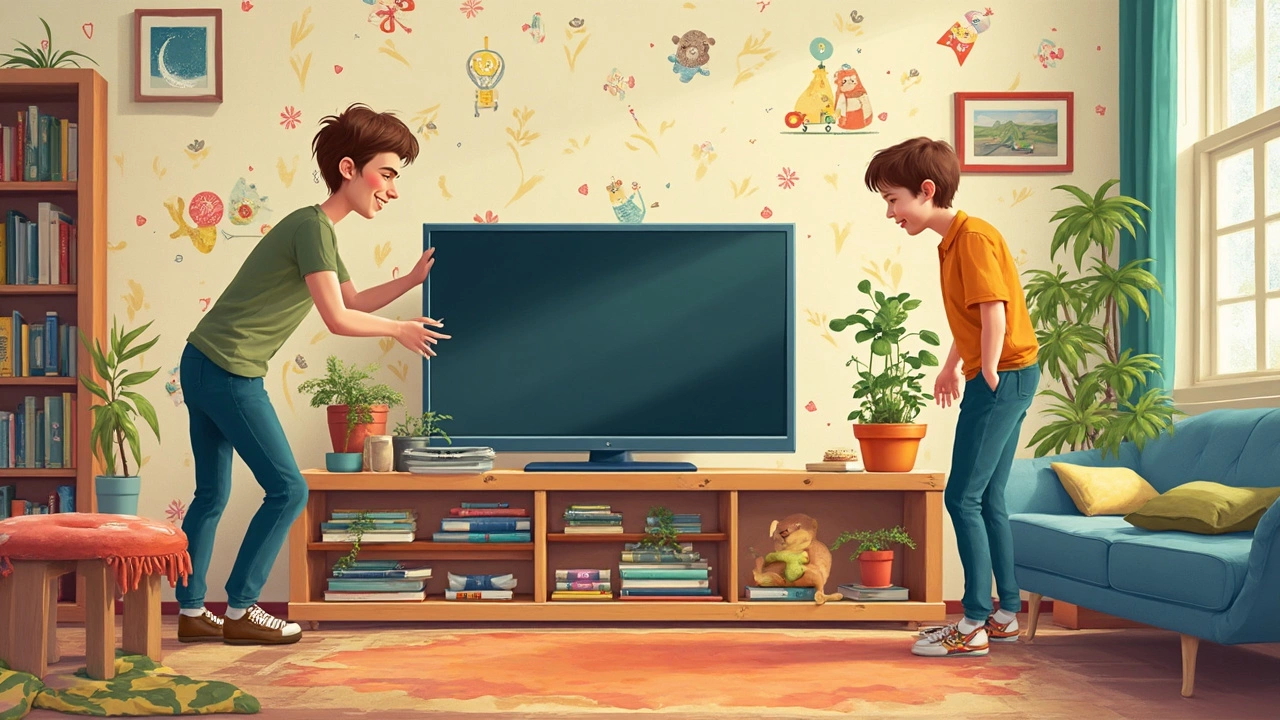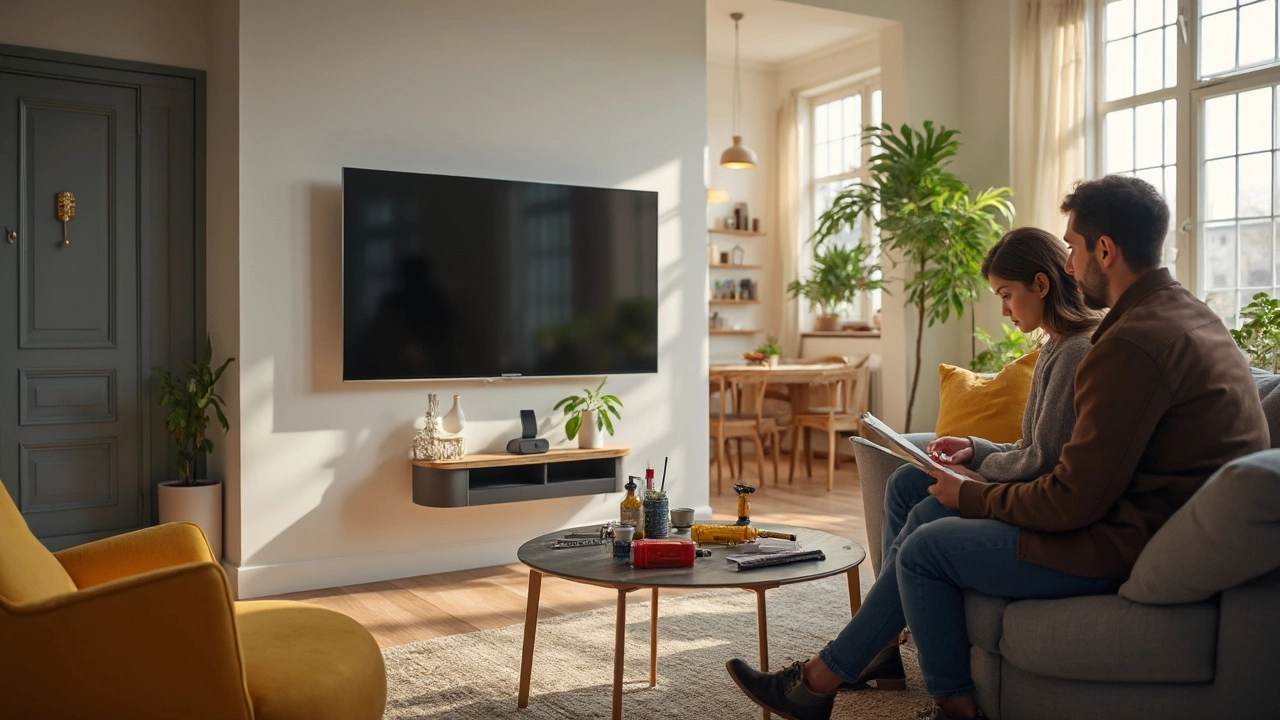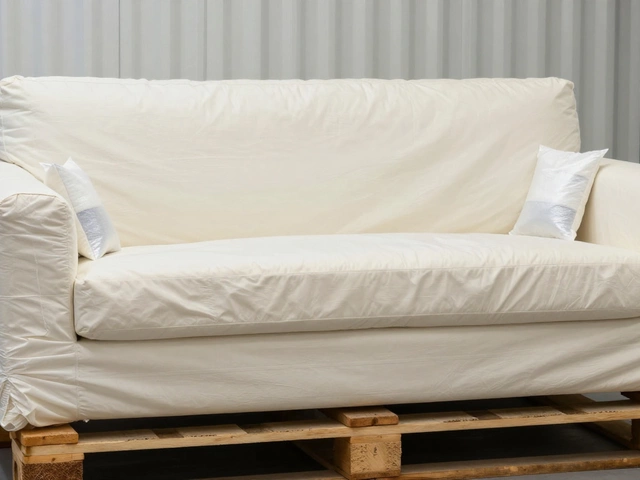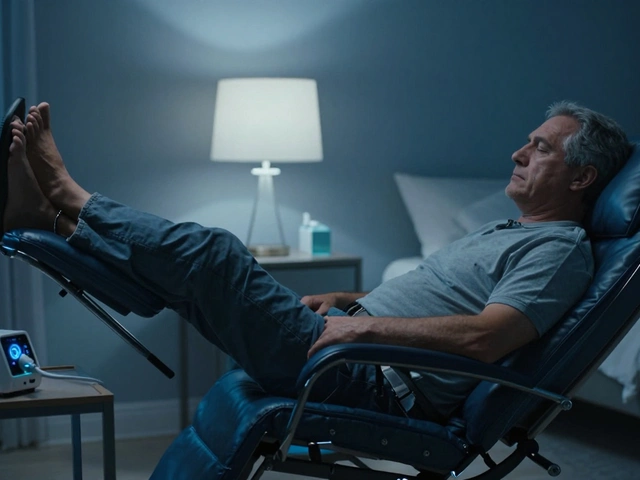So you've unboxed your new TV, but there’s no stand in sight. Or maybe the old one snapped, and now you’re left awkwardly propping it up with whatever’s on hand. It’s not a rare problem—especially with the way some manufacturers cut costs by leaving the stand out or offering it as a pricey add-on.
The good news? You’ve got options. You might even end up happier with your TV setup than if you had used the original stand. The simplest fix is wall mounting, if your space allows. Almost every flat-screen TV has VESA screw holes on the back, so it’s just a matter of grabbing a suitable wall mount you can install yourself or with a friend. If mounting on the wall isn’t your thing, there are universal TV stands you can pick up online or locally. These work for nearly every brand and size—just match the stand’s compatible size range with your TV.
Don't have time to wait for a new stand? You can rig up a temporary solution with common items from around the house, as long as you’re careful about stability. Think heavy furniture, stackable books, or even a sturdy crate. But, and this is big—never balance the TV on anything wobbly or lightweight, because a single bump could bring it crashing down. We’ll get into how to do it right, so your TV—and anyone near it—stays safe.
- Why TVs Come Without Stands
- Wall Mounting as an Option
- Universal TV Stands and Replacements
- DIY Fixes with What You Have
- Common Mistakes and Safety Risks
- Choosing the Best Solution for Your Space
Why TVs Come Without Stands
It can catch you off guard when you realize your fancy flat-screen didn’t ship with a TV stand. But this trend didn’t happen randomly—there are a few solid reasons behind it.
The biggest factor is cost. TV makers are always looking for ways to trim prices or boost features. Dropping the stand lowers manufacturing and shipping costs. Some brands now sell stands as separate accessories, which means you pay extra if you want one. That’s a classic upsell move.
There’s also been a shift in how people set up their TVs. In the last ten years, wall mounting has exploded in popularity, especially for larger models. According to an industry survey from 2023, nearly 50% of TVs sold above 50 inches were wall mounted. Manufacturers know this, so skipping the TV stand alternatives just makes sense for them.
No TV stand in the box also lets companies save on packaging. Without the bulky base, they can use smaller shipping boxes, cut down on waste, and lower damage risk in transit.
Sometimes, it’s just about design. Ultra-thin TVs look sleek on a wall, while a stand can make them wobble or look less modern. When brands show off their new models in ads and stores, they’re almost always mounted up high—so consumers start to expect the same at home. Bottom line: if your TV didn’t come with a stand, it wasn’t a mistake. It’s by design, saving money on both sides and leaning into how people actually use big screens now.
Wall Mounting as an Option
If your TV doesn't have a stand, mounting it on the wall is one of the most straightforward TV stand alternatives. It not only frees up space but also keeps your TV secure and out of reach from kids or pets. Nearly all flat-screen TVs from the last decade have VESA mounting holes on the back, so odds are, yours is ready for a wall mount.
You don’t need to be a pro to install a wall mounting TV bracket. Most universal wall mounts cost anywhere between $20 and $100 depending on their features, like tilt or swivel. Make sure to match the mount’s size and VESA rating (a standard that refers to the distance between the screw holes on your TV) to your TV’s specifications. You can usually find this info in the manual or on the manufacturer’s site.
Here’s a simple breakdown on how to get your TV up on the wall:
- Find the studs in your wall using a stud finder. Anchoring into drywall alone is a bad idea—the weight of even a lightweight TV can rip right through it.
- Hold the bracket against the wall at the right height, double-check that it’s level, and mark where you’ll drill.
- Drill pilot holes and bolt the bracket to the wall studs.
- Attach the mounting arms to your TV, then hang the TV onto the bracket and secure it as the instructions say.
Here’s a fun bit—not only does wall mounting look clean, a 2023 Best Buy survey found that about 57% of people who wall-mounted their TVs said it helped them make better use of their living area. If you hide the wires, it looks even tidier.
If you rent and can’t drill, try a no-drill stand or a floor-to-ceiling pole mount that clamps in place. Both are popular TV support options for apartments.
- Always double check the weight limit on any mount you buy.
- If your TV is huge (like 65 inches or more), get a friend to help lift it. It’s not worth wrenching your back.
Once that TV is up, you won’t miss the old stand at all.
Universal TV Stands and Replacements
If you’re staring at a TV with no TV stand, universal stands are your best friend. Seriously, these things are designed to fit almost any flat-screen, no matter the brand. You just need to know your TV’s size and the spacing of the VESA mounting holes on the back (the little holes where screws go in). Most universal stands work for TVs anywhere from 22 to 75 inches, but always double-check the range to avoid annoying returns.
Most universal TV stand alternatives come with all the hardware you need. You don’t even have to be super handy. Just line up the bracket with the VESA holes, screw it in, and attach the base. Usually, these stands sit low and steady, so you’re not risking a tip-over every time someone bumps the table. Plus, a lot of universal stands come with adjustable height settings, which makes them work with soundbars or different furniture setups.
If you’re not sure which one to buy, here are some solid features to look for:
- Weight Capacity: Never guess this—always check that the stand can handle your TV’s weight.
- Base Material: Tempered glass and solid metal are sturdier than plastic.
- Cable Management: Some stands have clips so you can keep things tidy in the back.
- Swivel Option: Want to turn the TV without moving the whole thing? Look for a stand with a swivel neck.
For anyone pressed for time, stores like Target, Best Buy, and Walmart usually keep universal TV stands in stock. Amazon Prime’s next-day delivery can also save the day. Expect to pay anywhere from $25 for a basic model up to $70 if you need bells and whistles like extra shelves or cable covers.
Here’s a quick breakdown of popular stand specs as of 2024:
| Stand Model | Fits TV Size | Weight Limit | Avg. Price ($) |
|---|---|---|---|
| FITUEYES TT106001GB | 32–65" | 88 lbs | 39 |
| Perlegear Universal Base | 22–65" | 99 lbs | 26 |
| WALI Tabletop Stand | 22–65" | 110 lbs | 30 |
Chances are, you’ll find a TV support option that fits your needs and doesn’t break the bank. Setting one up is usually faster and a lot less stressful than wall mounting—especially if you rent or don’t want to leave holes in the wall.

DIY Fixes with What You Have
If you don't feel like splurging on a new TV stand alternative or can't wait for delivery, don't worry. You can get surprisingly far with some basic household items. The key is to focus on stability and weight, so your TV isn't at risk of tipping over with the slightest nudge.
Here are a few practical ways to keep your TV upright while staying safe:
- Heavy, low furniture: A solid dresser or wide coffee table works wonders. Make sure the TV's base isn't hanging off the edge. If you can, push the TV against the wall for extra support.
- Books or sturdy boxes: Thick, hardcover books or wooden crates can help you level and support the screen. Stack them evenly on both sides to avoid leaning. If you have non-slip shelf liner, put it underneath to prevent the TV from sliding.
- DIY brackets with scrap wood: If you’re handy, cut two pieces of wood to support each side of the TV. Secure the wood pieces together with screws to make a basic stand. Just check the wood isn't warped or cracked.
- Bungee cords or strong tape: For a short-term fix, anchor the back of your TV to a wall or the edge of a sturdy cabinet using bungee cords. Keep the cords out of sight and out of reach if there are kids or pets around.
Wondering how common these setups are? A 2023 survey by a major tech forum found that roughly 12% of respondents used some sort of homemade rig to prop up their no TV stand screens for at least a few days while waiting for a permanent fix.
| DIY Fix | How Long Users Used It |
|---|---|
| Heavy Furniture | Several weeks |
| Stacked Books/Boxes | Up to 1 week |
| Wood Brackets | Permanent for some |
| Bungee Cords | 1-3 days |
Always double-check your setup from several angles. If anything wobbles or feels off, don’t risk it. The temporary fix is just that—temporary. When possible, switch to a proper TV support option or mount.
Common Mistakes and Safety Risks
When your TV doesn't have a stand, it’s easy to make choices that put both your TV and your stuff at risk. Some folks just balance their screen on a stack of books or a thin shelf. It might look fine at first, but it’s a disaster waiting to happen. TVs, especially bigger models, are top-heavy. A wobbly setup is just begging for a bad accident—kids and pets only make things riskier.
One huge mistake is skipping the instructions for universal TV stands or mounts. People sometimes grab screws that ‘look about right,’ but using the wrong size or length can wreck your TV’s threads or punch through the screen. To avoid stripped screws and permanent damage, always match the VESA pattern and reach for hardware that actually fits.
“TV tip-overs send an estimated 18,000 Americans to the ER every year—mostly kids under 10,” warns the Consumer Product Safety Commission (CPSC).
Another risky move: trusting lightweight furniture. Tiny tables and wire racks aren’t made for the weight or footprint of most TVs, even the slim ones. Your best bet is using heavy, sturdy furniture if you’re not going for a wall or TV stand solution. It should have a flat, wide top and sit close to the ground to lower tip-over risk.
Using double-sided tape, sticky pads, or makeshift supports like cardboard or plastic crates? That’s just asking for trouble. These can shift or collapse the moment the TV gets bumped. Even a slight nudge—or slamming a door nearby—can knock a TV onto the floor.
- No TV stand doesn’t mean anything goes—never skip secure anchoring or proper supports.
- Always use all four VESA screws if mounting on a wall or stand. Two or three is not enough to hold the weight.
- Keep cords organized so nobody snags them and yanks the TV down by accident.
Check out this quick table with common problems and safer swaps:
| Unsafe Choice | Better Swap |
|---|---|
| Thin shelf or stack of books | Sturdy, broad furniture or adjustable TV stand |
| Wrong screws or missing bolts | Correct VESA hardware from manufacturer or kit |
| Sticky pads or tape | Metal brackets, proper wall mount, or weighted base |
Bottom line: keep your TV and your household safe by steering clear of hacks that seem easy but can lead to costly accidents. It’s not just about the TV—it’s about not having an emergency room visit over a bad setup.
Choosing the Best Solution for Your Space
Picking the right fix for a TV with no stand comes down to your room setup, wall strength, and how permanent you want the solution to be. There’s no universal answer—what works in a city apartment might be a total pain in a family living room. Here’s how to make the best choice for your space and your needs.
If you’re tight on space or simply don’t want cables and consoles sprawled everywhere, wall mounting is usually your best bet. It keeps the TV off surfaces, looks clean, and actually reduces the chance of the TV getting bumped over (which happens more than you’d think, especially in homes with kids or pets). The chances of your TV falling are much lower with a properly installed wall mount than a table-top setup. The trick is making sure your wall can handle the weight—most drywall setups need you to drill into studs for support. Don’t just use anchors meant for picture frames; TVs are way heavier.
- Universal TV stands are super handy for renters or anyone who can’t drill walls. They’re affordable, often adjustable, and work with a wide range of brands. Look for solid metal bases and non-slip feet—skip the cheap plastic kind unless you like living dangerously. Always check the stand’s weight limits before you hit ‘buy’.
- If you need something fast, a sturdy credenza, dresser, or even a heavy storage bin can make a decent makeshift base. Just make sure whatever you use is level, won’t tip easily, and is deep enough to support the bottom edge of the TV.
- People sometimes get creative with books or bricks, but that’s risky if you have kids or pets running around. If you go the DIY route, tape or non-slip pads under the TV helps avoid slips, and use wall straps to anchor the TV to the back of furniture or the wall.
When shopping online or in local stores for TV stand alternatives, focus on the details: compatibility with your TV’s VESA pattern, weight limit, and whether assembly tools come in the box. Some stands even let you swivel or raise the height for a better viewing angle, which is great if you move furniture around a lot.
| Option | Best for | Estimated Time to Set Up |
|---|---|---|
| Wall Mount | Permanent setups, homes with pets/kids | 1-2 hours (with tools) |
| Universal TV Stand | Renters, frequent movers | 30-60 minutes |
| DIY Furniture Base | Temporary or emergency fixes | 5-15 minutes |
Remember, no matter which TV support option you go with, give the TV a little push (gently, of course) once it’s set up. If it wobbles, rethink your plan. Safety always comes first—nobody wants a busted big screen or a trip to urgent care over a toppled TV.







